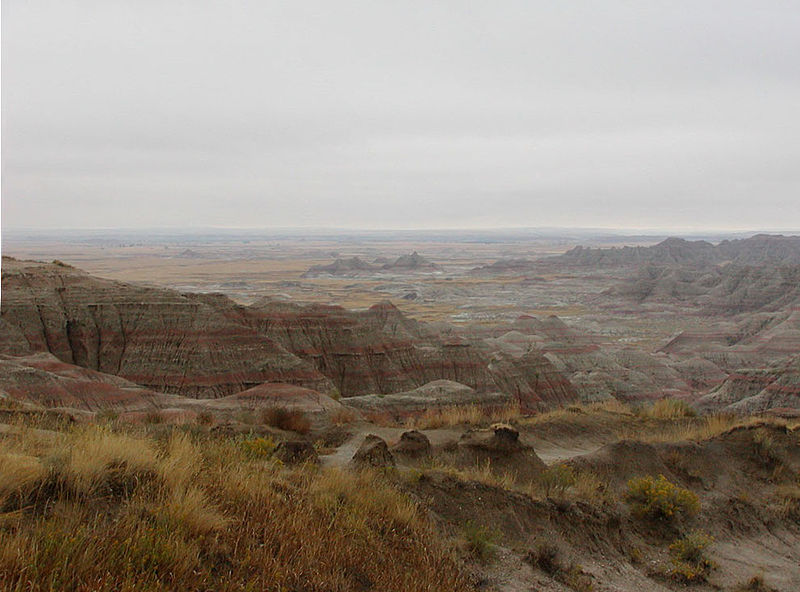The late 1930s saw the buildup to World War II.
Nomonhan, 1939: The Red Army's Victory That Shaped World War II by Stuart D. Goldman tells the story of events in the far East that influenced policy makers in several countries at the time -- events that were perhaps more important than has been widely appreciated.
Japan was embarked on an program of imperial expansion. It occupied Korea, had a client state in Manchukuo, and had embarked on a war of conquest against nationalist China. Its government was dominated by military officers.
The Soviet Union with its own imperial ambitions was threatened in the west by Germany and feared Japanese expansion in the east. Its empire extended to the Pacific, shared a border with Manchukuo, and had a client state in the People's Republic of Mongolia. The Communist government was still solidifying its control of the nation.
I would note that the client states of Japan and the USSR were very different. Manchukuo had important natural resources, and in fact was producing more steel than the home islands of Japan. Manchuria was much less developed, still dominated by nomadic herders.
Two localized military clashes over contested border areas between the USSR and Manchukuo in 1937 and 1938 were followed by a much larger clash on the Mongolia-Manchukuo border in the summer of 1939. This latter conflict was near the town of Nomonhan, and appears to have involved an area claimed by both countries of several tens of square miles, albeit an area of little strategic importance to either side.. In all three cases, the clashes were primarily between Soviet and Japanese armies. In this final clash there were something like 50,000 casualties between the two sides. The USSR and Mongolia were left in command of the disputed territory, and the Japanese army in Manchukuo was deemed to have suffered a major defeat.
The military situation was resolved ultimately by national governments on the basis of geopolitical strategies. After the USSR signed the non-aggression pact with Germany, Germany encouraged Japan to normalize relations with the USSR. A cease fire was rapidly agreed upon, and a committee set up which rapidly defined an appropriate boundary. Note that thousands of soldiers died in a battle over a disputed boundary, a boundary that ultimately was quickly negotiated when political will dictated settlement. Neither those in power in Tokyo nor those in power in Moscow seemed to have much concern for the lives of the common soldiers who fought, were wounded and died in these battles.
Goldman provides a picture of a Japanese military that was overconfident of its ability to win against all odds, that was imbued by a philosophy that gave low ranking officers in planning units great influence on strategy, and in which regional units might with impunity disregard orders from headquarters. That army had a culture that appears very alien to me because it believed in the divinity of the emperor, it imbued flags and ornaments presented to military units in the name of the emperor with religious significance, it refused to accept the possibility of defeat, and it demanded suicide of soldiers about to be captured and of officers who failed in the code of Bushido. Japanese soldiers fought to the death.
Goldman notes the Stalin purges that decimated the senior ranks of the Soviet army before the battle of Nomonhan. He also notes that the purges affected the officer corps broadly. He is perhaps less detailed in describing the rapid increase in the size of the army as the USSR was preparing for war in Europe (from which I infer probable lack of training of many soldiers). I found it hard to imagine the culture of the Soviet soldier, nor to understand their effectiveness in combat. In the final battle in August of 1939, with overwhelming advantages in artillery, armored vehicles, air support and numbers the Soviet army crushed the opposition, but suffered more casualties in the process than did the Japanese.
The book stresses the concern that Soviet leadership had that the nation might face war with Germany on its western front and simultaneously war with Japan in the east. It emphasizes the part that the border conflicts with Japanese forces had in stoking that concern;. The Communist government might well not have survived simultaneous wars with Germany and Japan. The book also stresses the diplomatic subtlety with which the Soviet government first tried to encourage war between democratic capitalism and fascist capitalism, and then conducted negotiations with Britain and France on the one hand and with Germany on the other. When the non-aggression pact was finally negotiated with Germany, that pact reduced the threat from Japan in the east as well as delaying the attack from Germany on the west, providing valuable time to strengthen the army.
The defeat at Nomonhan convinced authorities in Tokyo that the Soviet army was more formidable than had been thought. Japan entered into a non-aggression pact with Soviet Russia following the German-USSR non aggression pact. The Japan-USSR pact lasted until after the defeat of Germany (and the Soviet invasion of Manchukuo and rapid defeat of the Japanese army there must be considered to have contributed to the Japanese decision to surrender). Nomonhan also led to power shifts that in turn resulted in replacement of the "northern strategy" of imperial expansion with a "southern strategy". The Japanese continued to occupy Korea and Manchukuo, continued to fight a war with China (both the nationalist and communist forces there), and following the southern strategy invaded French Indochina, Dutch Indonesia, and the Philippines, and declared war on the United States and its European allies. History shows that this southern strategy was disastrous for the Japanese government and the Japanese people.
I really liked the book. It is very clear and succinct as might be expected from an author with decades of experience writing briefings from the Congressional Research Service for members of Congress and their staffs. It is very well researched, and very well documented. It is effective in providing background for the events and assessment of their implications without neglecting to describe the military encounters in some detail. Not only does this book bring to public attention events that should be better appreciated as influential in the buildup to World War II, it gives one a basis to think generally about some factors of importance in Nomonhan that may also influence more generally history.
Japan was governed by the military as much as any nation in recent history. The Soviet Union was a nation with very strong control of the military by the civilian government. Goldman points out how much more effective the Soviet government was in using military power to achieve political objectives, and how prone the Japanese military government was to get into strategic problems as a result of tactical military thinking and local operations. I am reminded of Eisenhower's warning about excess influence of the military industrial complex on U.S. policy.
Goldman reminds us of the contingency of history. I was left wondering what would have happened had Germany gone to war with the USSR with Japan as an ally and the French and British empires as neutral onlookers. The world today might be very different. Yet that alternative was not so very distant a possibility in the 1930s.
I recommend this book strongly!
























